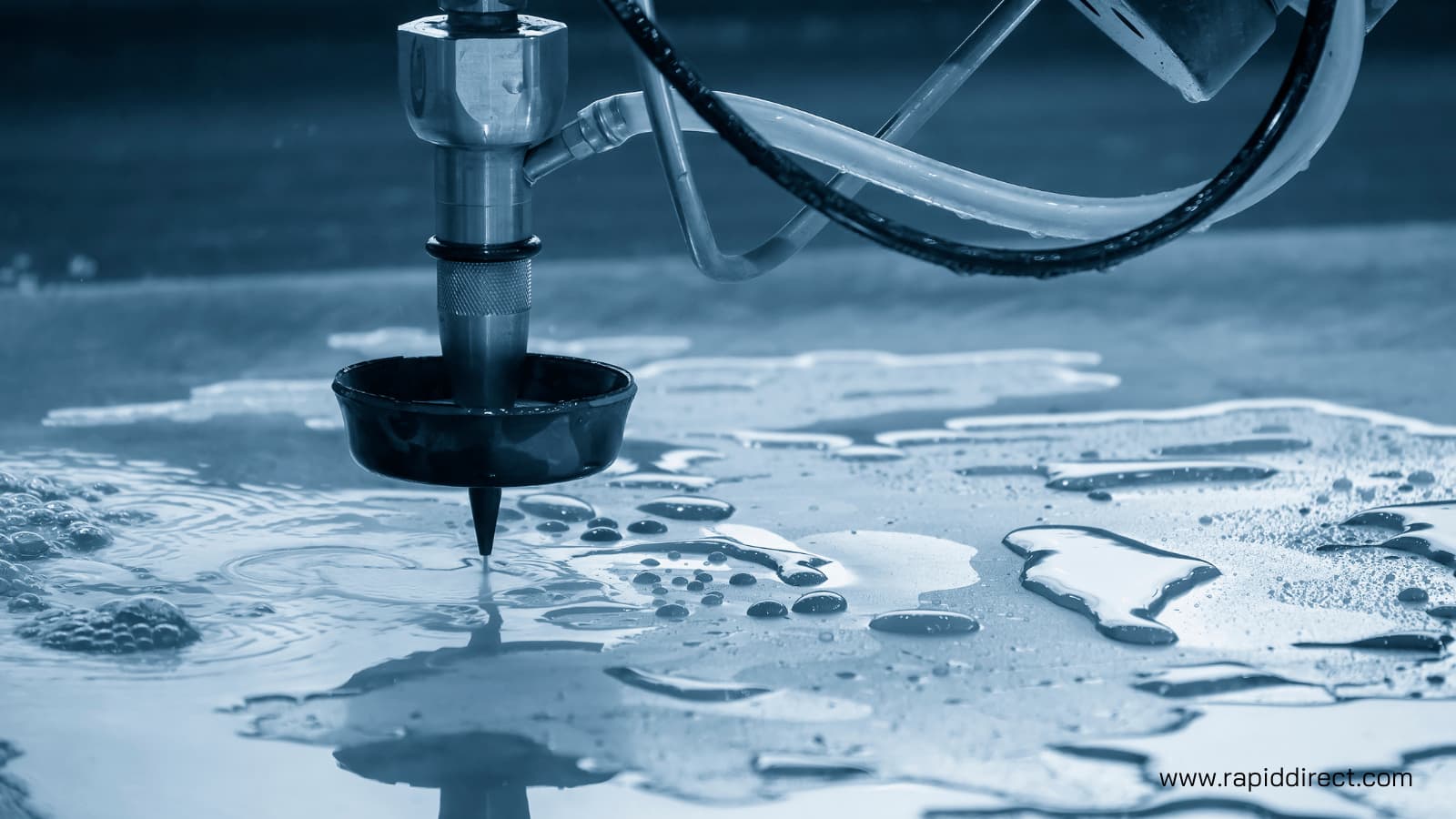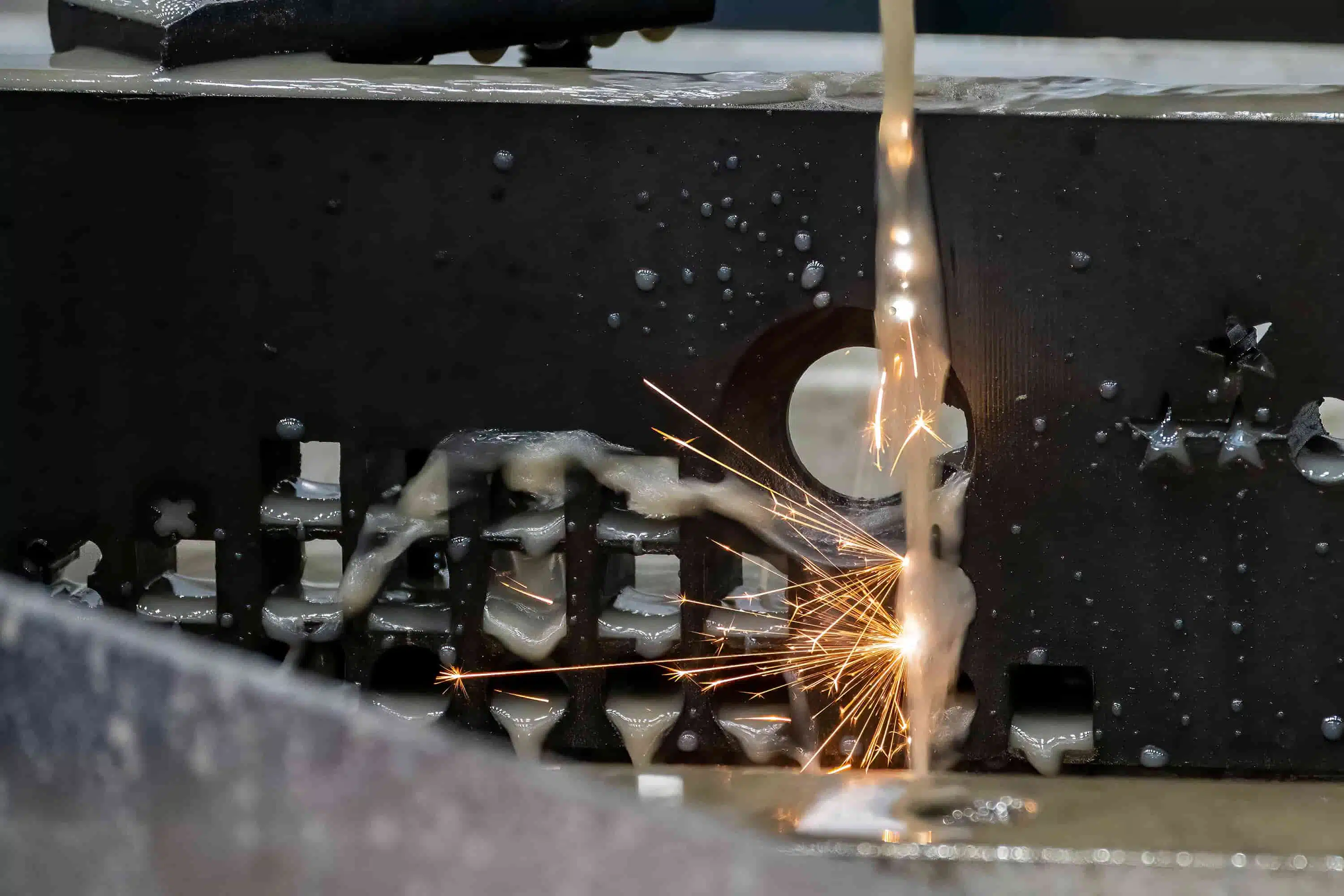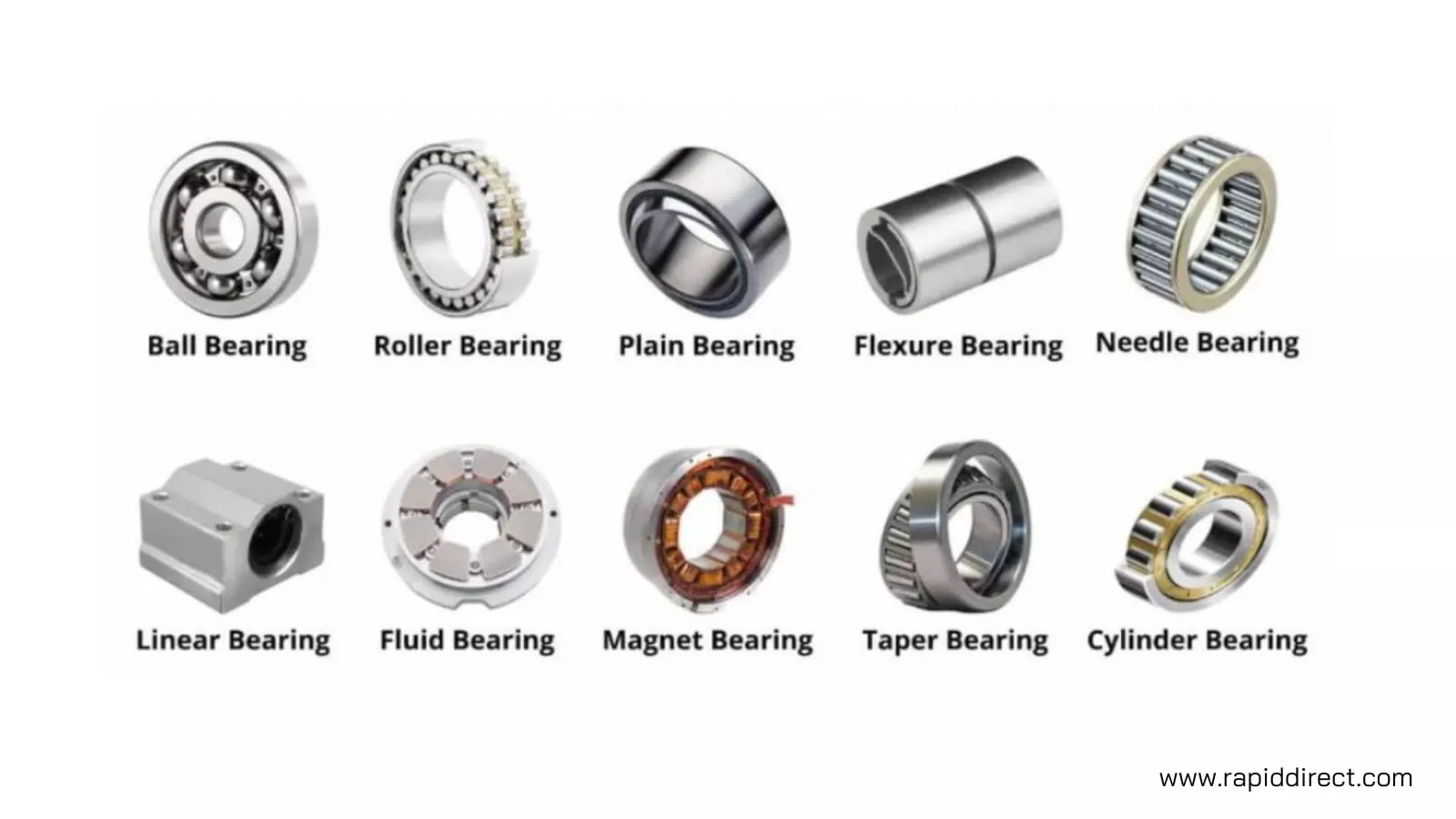As plastic manufacturing is moving towards more innovation, the new debate is injection molding vs 3D printing. Injection Molding is the continuity and advancement of old molding technology. On the other hand, 3D printing is a relatively new and unique approach to plastic shaping.
Both techniques have their own capabilities and limitations, making them suitable for different materials and application scenarios. Thus, it might be challenging to decide which one to choose. If so, continue reading. We will discuss 3D printing and injection molding in detail, including capabilities, pros & cons, applications, and differences in many aspects.
What’s Injection Molding?
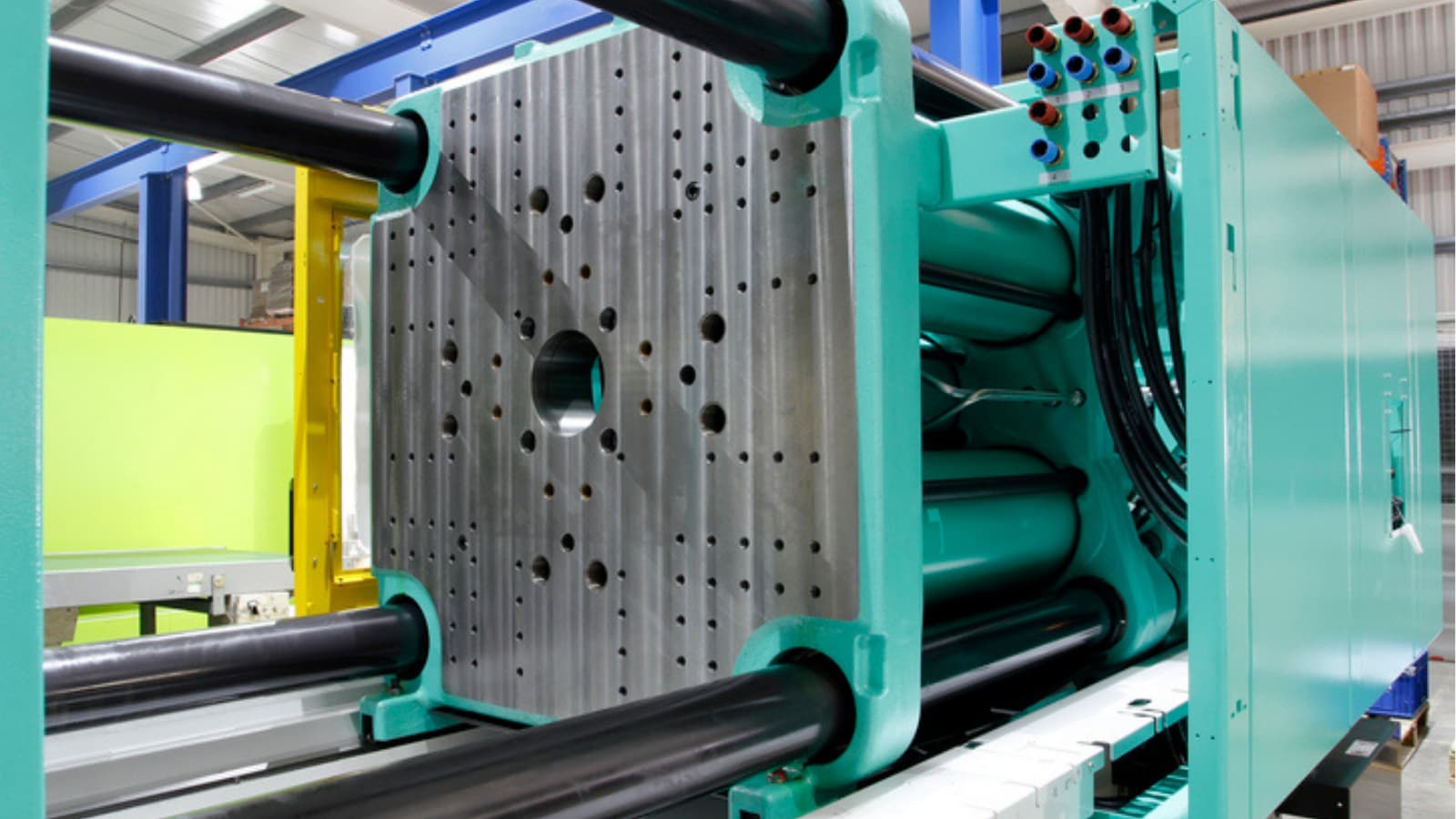
It is an efficient approach to producing complex and intricate plastic parts in large volumes. Although injection molding can mold some metals and composites, it is popular in thermoplastic parts and product manufacturing.
The Injection Molding Process
The injection molding process begins with melting raw plastic pellets in a heated barrel. Once molten, a high-pressure injection ram (or screw) forces the molten plastic into the injection mold.
Essentially, this mold represents the negative geometry of the desired part and often contains highly complete cavities to detail the shape.
Next, the plastic cools and solidifies rapidly, taking the shape. After solidification, mold opening and ejection make the molded part ready for any post-processing (if required).
Materials for Injection Molding
This process mainly applies to plastic components and products, although some metal and thermoset composites can be molded based on the requirements of applications.
Here is the list of injection molding materials with concise elaboration.
- Polyethylene (PE)
- Polyvinyl Chloride (PVC)
- Polystyrene (PS)
- Polypropylene (PP)
- Nylon
- Polycarbonate (PC)
- Acrylonitrile Butadiene Styrene (ABS)
- POM or Acetal
- Polyether Ether Ketone (PEEK)
- Thermoplastic Polyurethane (TPU)
- Thermoplastic Elastomers (TPE)
- Epoxy
- Silicone
- Polyester
- Low Alloy Steel
- High-Speed Steel
- Iron-Nickel Alloys
- Aluminum
Applications of Injection Molding
| Application | Examples |
| Automotive | Bumpers, dashboards, cup holders, door handles, light housings |
| Aerospace | Airflow vents, cabin components, seat frames, armrests |
| Medical | Surgical instruments, implants, syringes, diagnostic devices |
| Food Processing | Food packaging containers, conveyor system components, utensils |
What’s 3D Printing?
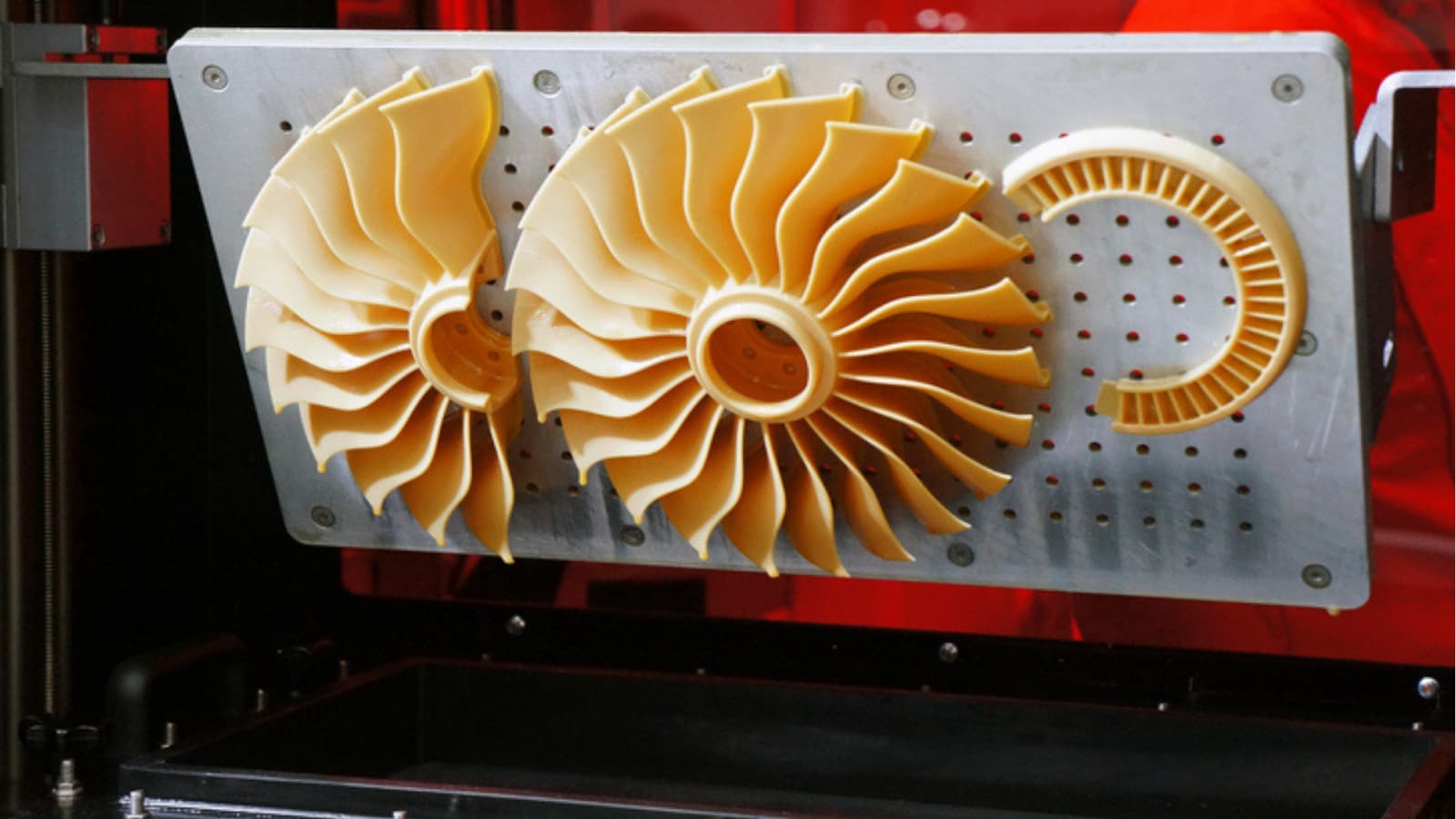
It is an additive manufacturing process that builds the function of objects by adding material layer by layer, based on the CAD design. Meanwhile, the deposition is entirely computer-controlled for precision.
The Process of 3D Printing
First, the process involves designing a 3D model using design software. Then, a 3D printing machine converts this model into a digital file that slices the model into thin, horizontal cross-sections. Next, the 3D printer uses sliced layers as a roadmap and prints them layer by layer to form the desired geometry.
However, the printing process might vary depending on which type of 3D printing technology you are using;
- Fused Deposition Modeling (FDM): The nozzles extrude the molten thermoplastic in continuous layers.
- Stereo-lithography (SLA): A laser hardens liquid resin in a vat to transfer the design.
- Selective Laser Sintering (SLS): A laser fuses powdered material, such as plastic, metal, or ceramic, to form the object.
- Digital Light Processing (DLP): Similar to SLA, but uses a digital light projector to harden the resin.
Materials for 3D Printing
3D printing material options expand beyond the thermoplastics, including some composites and metals. However, it has limitations if we compare 3d printing vs injection molding materials.
- Polylactic Acids(PLA)
- Acrylonitrile Butadiene Styrene(ABS)
- PETG (Polyethylene Terephthalate Glycol)
- Nylon
- Thermoplastic Elastomers
- Thermoplastic Polyurethane(TPE)
- Stainless Steel
- Aluminum
- Alumina
- Carbon Fiber and Glass Filled-composites
3D Printing Applications
3D printed parts are increasingly becoming popular for rapid prototyping and short-term production. Nevertheless, it is also suitable for medium-volume production in various conditions.
| Industry | Parts and Components |
| Aerospace | Fuel nozzles, brackets, air ducts |
| Automotive | Dashboard components, gears, door handles |
| Medical | Custom prosthetic limbs, surgical guides, dental implants |
| Consumer Products | Phone cases, eyewear frames, footwear |
Key Differences Between Injection Molding and 3D Printing
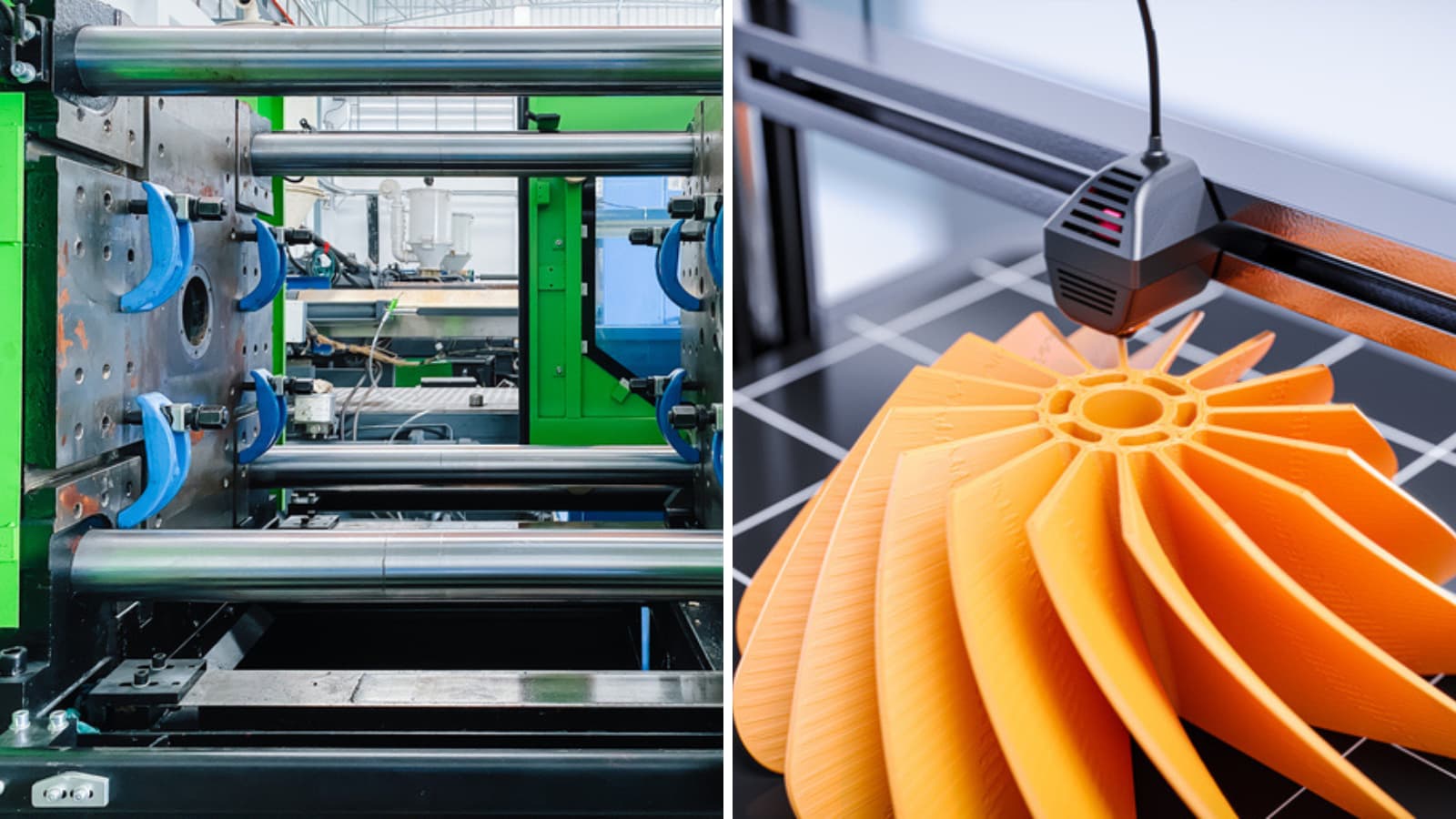
Since you get the overview of both processes, let’s discuss the fundamental differences in different aspects, such as size, time, and precision capabilities.
1. Volume
The injection molding is hectic when it comes to tooling. It requires the design and manufacturing of molds. It makes injection molding less effective for prototyping and small volumes. In contrast, there is no such complex tooling in the 3D printing process. Once you have the 3D printing design and material filament, machines can transfer your design into reality without any hurdles.
Thus, 3D Printing is best suited for prototyping to a few thousand runs, unless other technology cannot achieve the required complexity. Another interesting thing is that 3D printed injection molds are popular in plastic molding. Meanwhile, medium to large volumes are highly cost-effective for injection molding. Once you make the mold, it can repeat up to millions of cycles.
2. Design Complexity and Customization
3D printing dominates the complexity feature, especially in Injection Molding vs 3D Printing. It can create sharp corners, undercuts, and other complex features. On the other hand, Injection molding has some limitations for complex geometries, such as right draft angles, material flow in sharp corners, etc.
| Feature | Injection Molding | 3D Printing |
| Wall Thickness | Uniform wall thickness is mandatory (typically 1mm to 4mm). | It can accommodate varying wall thicknesses. |
| Draft | Usually 1° to 2° to facilitate part removal. | No draft angles required |
| Protrusions | It can complicate mold design and increase costs due to the need for additional mold features. | Easily handles protrusions. |
| Internal Features | It requires intricate molds or additional processing. | 3D printing is known for parts with complex internal features, including channels and hollow sections. |
Furthermore, these same reasons make 3D printing more suitable for custom parts and products, if you produce up to a few thousand parts.
3. Part Size
First, injection molding is flexible with every size, from small electronic casings to large automotive bumpers. However, it is necessary to use the injection molding equipment and tooling (mold) accordingly. For example, large injection molding machines can mold parts up to 1.5 meters or more in length.
Typically, 3D printers are more favorable for small-sized components and products. However, recent innovations have expanded the size capabilities of 3D printed products and parts (300mm x 300mm x 400mm or more).
4. Part Tolerance
3D printing offers more tight tolerances than injection molding. It falls between ±0.05mm and ±0.50mm for injection molded plastic parts. On the other hand, tolerance can be as tight as ±0.127mm in the 3D printed components.
Furthermore, the tolerances depend on material type, technology, tooling, equipment, and experience of manufacture.
5. Turnaround Time
Creating mold for injection molding is a precise and long process, weeks to months. You can use a 3D print and other types of injection molds to make it less time-consuming. Once the mold is ready, injection molding becomes incredibly efficient and reduces the long turnaround times.
In contrast, 3D printing facilitates a fast turnaround for initial production. The reason is that there is no need for tooling like mold, and it significantly reduces the initial setup time.
6. Strength
The differences in strength 3d printing vs injection molding parts are due to their build-up process. First, how strong are 3D printed parts? 3D printing parts consist of a layer-to-layer structure, which results in weak strength and stiffness in the lateral direction of the applied force.
On the other hand, the molded parts involve a single poured layer build-up. This structure contributes to high mechanical strength. Consequently, heat and pressure during plastic molding eliminate voids and establish a thorough material fusion.
So, injection molding offers better strength and stiffness to the end parts than 3D printing. The only thing you need to consider is the material because the final strength also depends on the raw material type.
7. Surface Finish
Next, let’s compare the appearance of the produced parts. When molten material takes the shape of the mold with pressure and heat, the surface becomes smooth after solidifying. However, it also depends on the finish of the cavities wall in the injection mold.
In contrast, 3d printed objects might contain some visible lines of material layers. The roughness (Ra) for 3d printed plastic items typically ranges from 1. 6 to 25 µm. At the same time, it is 0.1 to 0.2 µm for molded parts.
8. Material Wastage
The material wastage happens in injection molding at the gate & runner, sprues, and as a flash. However, the wastage is recyclable in the subsequent cycles.
On the other hand, 3D printing is highly material efficient. It wastes almost negligible material (wastage at the structural supports sometimes).
Injection Molding vs 3D Printing Costs
The overall cost of any manufacturing project is a critical concern as it decides the success of the intended product. Meanwhile, the overall cost varies on different factors, such as setup, tooling, and labor costs.
Here are the differences between injection molding vs 3d printing costs with a detailed breakdown.
Initial Setup Costs
The initial cost is higher for injection molding because of high equipment and mold design & creation. For example, even a small size (10 x 10 cm) mold might cost $5000 to $ 10,000. However, the mold is usable for a long time.
But, 3D printing only involves printing machine costs and material costs to kick start the project. It is also flexible with space sizes, printers come in various sizes, from small desktop 3D printers to large industrial scales.
Production Volume
| Production Volume | Injection Molding Cost | 3D Printing Cost |
| Prototyping | High (due to significant investment in mold creation) | Low because of minimal tooling cost |
| Small Batches | Moderately high, the setup investment still does not justify the per-part price. | Low to moderate, depending on the material and 3D printing types. |
| Medium Volumes | Moderate per-unit cost reduces significantly | Moderate to high (increased material use) |
| Mass Production | Low, optimal use of investment in injection mold. | High, slower, and more material-intensive |
Tooling Cost
As previously mentioned, injection mold cost significantly increases the overall tooling cost for the process initially, but it decreases as you produce more volumes. 3D printing initially involves low tooling costs besides the printing machine.
Additionally, the control units, part removal systems, and other small tooling cost increases the cost of the injection molding process.
Material Costs
Firstly, manufacturers often buy materials in bulk for injection molding projects as it is typically suitable for large volumes. So, it reduces the costs. Additionally, molding can accommodate relatively low-grade materials if it does not affect the product’s performance.
On the other hand, 3D printing methods like SLS fill the build chamber with powder. It causes inefficiencies despite reusable material and increases the cost of 3d printing material. Furthermore, some 3D printing applications require materials with custom properties (high strength, flexibility, or thermal stability) to achieve the desired part performance. These specialized materials are more costly than the standard polymers used in injection molding.
Labor Costs
Lastly, the labor cost in 3D printing vs injection molding as it impacts the overall cost-efficiency. The high automation in 3D printing reduces labor costs for low-volume, complex, or custom. Human intervention is only necessary for setup, monitoring, and post-processing.
Injection molding is also an automated and advanced manufacturing process, but mold design and maintenance complexities result in higher labor costs than 3D printing.
Advantages and Disadvantages of Injection Molding
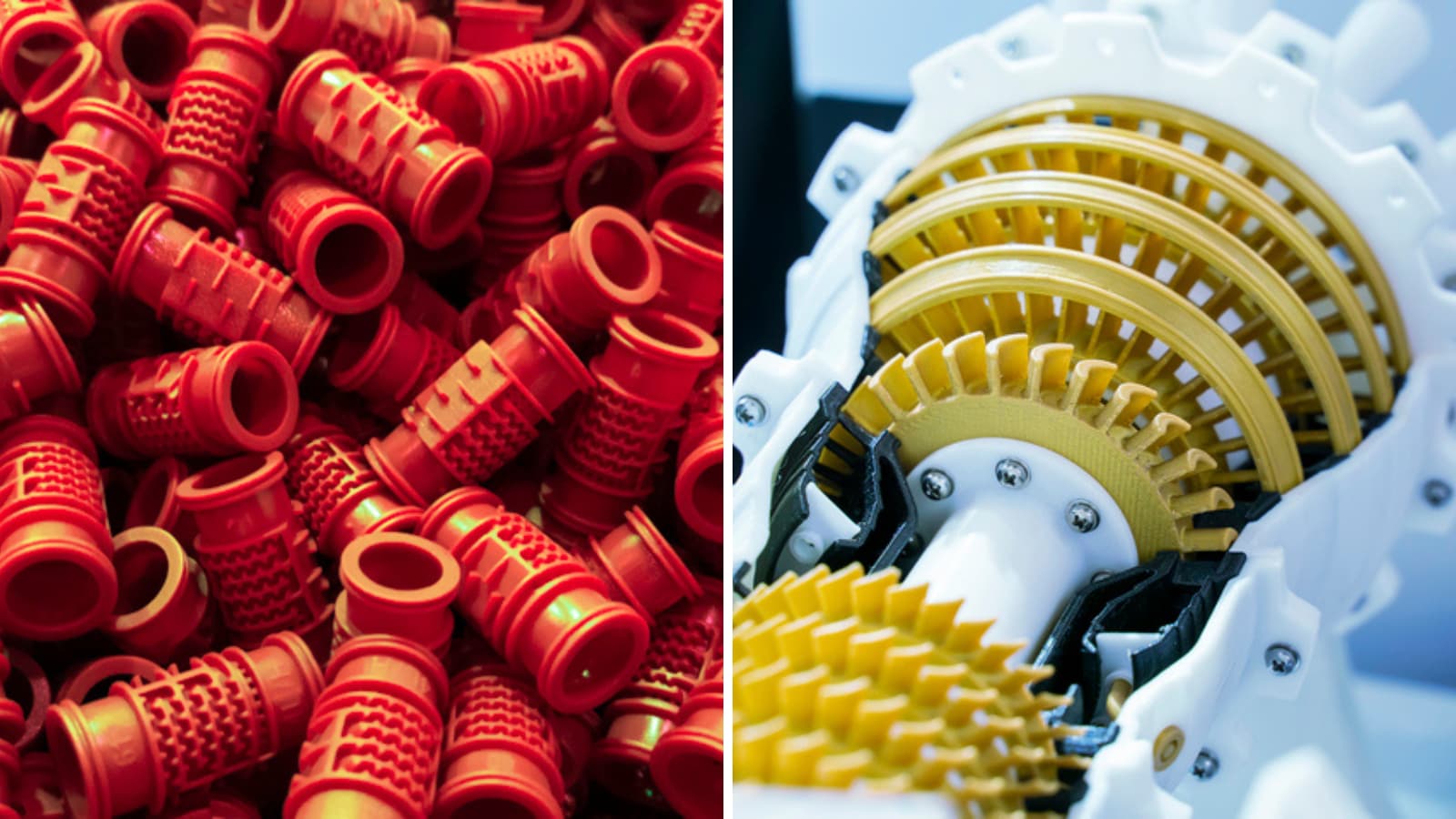
After a head-to-head comparison of both processes, let’s objectively point out the pros & cons of each. First, injection molding;
Advantages of Injection Molding
- It offers excellent productivity and low per-unit cost, especially in mass production.
- Injection molding maintains the high accuracy of produced parts across the batches.
- The optimal mold design can handle the complex features and undercuts.
- The versatile applications, from automotive door handles to medical syringes.
- The process keeps intact or enhances the original mechanical properties of the materials.
- The parts just ejected from the mold show a high-quality surface finish, reducing the need for post-processing.
Disadvantages of Injection Molding
- The first con is a significant upfront investment in molding equipment and injection mold.
- Geometry limitations for complex parts due to design constraints like draft angles and material flowability.
- The per-unit cost is too high for small volumes.
- Plastic waste raises sustainability issues and environmental concerns.
Advantages and Disadvantages of 3D Printing
Advantages of 3D Printing
- The low initial investment for setup and tooling makes it cost-effective for small volumes.
- It creates more complex shapes than injection molding and can adjust the design changes quickly.
- 3D printer machines can quickly produce prototypes for design iterations and product development.
- Highly custom parts are possible with 3D printing.
- As an additive process, it generates less waste than subtractive techniques.
Disadvantages of 3D Printing
- 3D printing mass production is generally slower than injection molding. But, it could be efficient if the design complexity is incompatible with molding.
- The part size is constrained by the bed size and printer’s capabilities.
- The printed surface often exhibits layer lines. So, it might require additional finishing processes to achieve a smooth finish.
Choosing Between Injection Molding and 3D Printing
The above discussion might clear your doubts about 3D printing vs injection molding. The choice entirely depends on the volume, budget, material, design complexity, and other aspect of your project.
The following illustrations show the recommendations under various criteria;
| Criteria | 3D Printing | Injection Molding |
| High Volume Production | ✓ | |
| Low Volume Production | ✓ | |
| Budget Constraint | ✓ (for low volume) | ✓ (for high volume) |
| Material Options | ✓ | ✓ |
| Design Complexity | ✓ | |
| Prototyping | ✓ | |
| Customization | ✓ | |
| Structural Strength | ✓ | |
| Surface Smoothness | ✓ | |
| Production Speed | ✓ |
Moreover, it is always best to consult with professionals and industry experts like RapidDirect. By doing that, you can leverage the expert’s experience to decide the optimal match according to your requirements and application needs.
RapidDirect provides comprehensive solutions with Injection molding services and 3D printing Services. We have a dedicated team and factory to handle your project and meet the stringent standards.
- 100+ Material Option
- Rapid lead times
- Quality yet affordable
- Client-centric communications
- Advanced Machinery, such as CNC, EDM, and 3D printers for injection mold making.
So, upload your design if you need any molding or 3D printing parts products. We will get back to you with an accurate quote!
Conclusion
Overall, both processes are prominent in plastic manufacturing under different scenarios. Injection molding is best for small to large-sized complex parts in medium to large numbers. On the other hand, 3D printing is ideal for prototyping and manufacturing complex parts in small volumes. So, which one is the best? The answer is what your design says and what your project specifications are.
FAQs
It depends on how many parts you are producing. It is cheaper than injection molding for low-volume production. However, 3d printing is costly for large-scale production.
Yes, it is better for custom parts and prototypes. It provides design flexibility and iteration without significant additional costs. On the other hand, it is not suitable for large volumes of parts.
3D Printing technologies are becoming more innovative each day, but unlikely to completely replace injection molding. Moreover, they will work together to bring more quality and efficiency to production.
